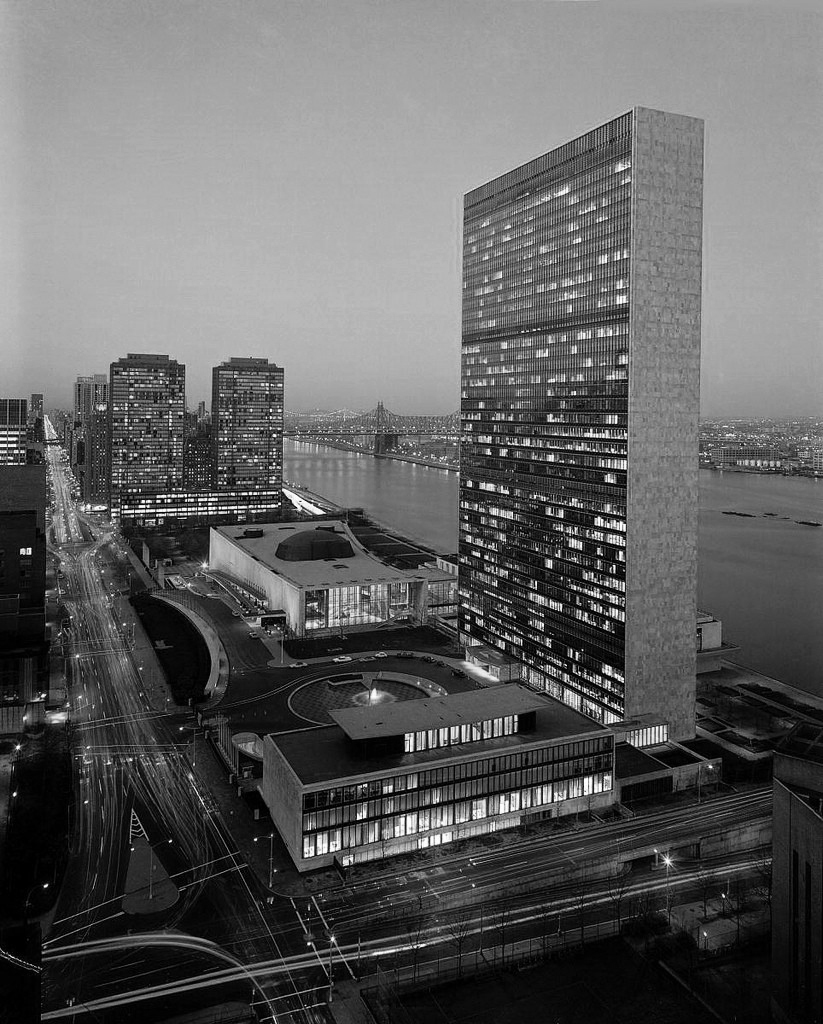Among New York’s best mid-century modernist buildings, the United Nations is one of our favorites.
Designed by a team of architects led by Brazilian, Oscar Niemeyer and Swiss-French, Le Corbusier in 1947, the UN’s first headquarters in New York City opened with great fanfare in 1952. Designated international territory under high security, this iconic landmark building was the first skyscraper with a curtain wall.
Controlling the temperature with this stunning curtain wall, it seems, has always been a challenge. From day one, the costs to heat and cool the building were astronomical – estimated at $10 million a year in 1990. By 2008, in an effort to reduce global warming impact and save money, Secretary-General Ban Ki-moon launched “Cool UN”. This initiative raised thermostats by five degrees and shut down HVAC (heating, ventilation and air conditioning) systems on weekends.
In one of the early design schemes, Le Corbusier did design a “brise-soleil” system to shade the two glass facades, but the UN did not approve and instead the glass panels were coated with heat-absorbing Thermopane. Even with operable windows and 4,000 Carrier units, the east and west offices were often baked by exposure from the afternoon sun.
In 2014, the UN completed a major renovation of its building. This process took more than six years, and included an upgrade of the HVAC systems and glass facades, with the main objective to reduce energy waste. The United Nations has plenty of challenges, but architecture was certainly one they did not expect.
We can only imagine the loss of productivity from one other critical issue: cooling the very important people working there. Surprisingly, they are not alone. According to IFMA, the number one complaint from occupants working in buildings in the US is “too cold” and number two is “too hot”.
To be sure, the UN building would have been much better served if Le Corbusier’s suggestion was implemented as designed, or if the glass facades were simply built facing north and south, rather than east and west. Strategic design decisions like these can considerably affect the overall performance of a building. Designing for health, productivity and well-being of the occupants within must be considered as essential as the elegance and sustainability of the architecture.
Photo credit: archdaily
References:
Basile, Salvatore. Cool: How Air Conditioning Changed Everything. Fordham University Press. 2014.
https://www.curbed.com/2017/5/9/15583550/architecture-air-conditioning-skyscraper-wright-lever-house
http://www.un.org/apps/news/story.asp?NewsID=27536#.WVVM_hPysUs
http://www.nytimes.com/1999/10/24/nyregion/international-symbol-neglect-u-n-building-unimproved-50-years-shows-its-age
http://www.ifma.org/docs/default-source/surveys/hvacsurvey2009.pdf?sfvrsn=2

